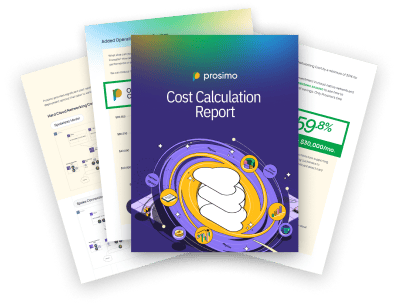When organizations choose to adopt a zero trust strategy, they often grasp its critical importance in strengthening cloud security protocols. However, a vital aspect that sometimes gets overlooked is its influence on cloud cost management and maintaining stringent budget control. To effectively prevent excessive cloud expenses and to guarantee that you are maximizing the value derived from your cloud budget, it is essential to implement a zero trust approach across all dimensions of your cloud management practices. By doing so, you not only secure your data but also streamline costs associated with cloud services. This article aims to delve into the significant financial advantages that a zero trust framework can provide, demonstrating how it leads to more efficient resource utilization and ultimately helps in achieving greater fiscal responsibility within your organization.

Understanding the Zero Trust Approach
A zero trust approach is a security framework built on the foundational principle of not automatically trusting any user or device, regardless of their location within the network. This mindset is crucial in minimizing unauthorized access and significantly lowering the risk of cyberattacks. By adopting this strategy, organizations can prevent costly mistakes that arise when users access areas of the workload that fall outside their specific job responsibilities.
In a zero trust model, reliance on traditional security hardware or parameters like VPNs and firewalls is minimized. Instead, every user and device is viewed as a potential threat, even those already inside the network. Access is not granted simply because a user has been previously authenticated or is currently connected to the network. Each access request undergoes rigorous scrutiny, requiring a comprehensive assessment of the authenticity of the user’s credentials. Moreover, all data transmissions must pass through stringent authentication, authorization, and encryption processes, leaving no room for exceptions. User sessions are often restricted and may involve advanced identity verification techniques, such as Multi-Factor Authentication (MFA), to enhance security further.
Additionally, a zero trust approach bolsters protection against insider threats—security risks arising from individuals within the organization, such as employees or contractors, who may misuse their access for malicious intents or inadvertently compromise security. By continuously verifying and monitoring all users, devices, and activities, this model eliminates the presumption of trust for anyone inside the organization. Access is granted strictly based on specific permissions, significantly reducing the likelihood of unauthorized actions or data breaches stemming from insiders.

How a Zero Trust Approach Drives Cloud Cost Optimization
In 2023, the average cost of a security breach reached an alarming $4.4 million, a figure that continues to rise each year. Such breaches can potentially cripple a business, leading to devastating financial consequences and even permanent closure. Therefore, investing in robust cloud security—through both resources and training—is not just advisable but essential. A zero trust approach plays a pivotal role in generating substantial cost savings while enhancing security. Here’s how adopting this model leads to effective cloud cost optimization:
Detailed Access Control
The zero trust model promotes the concept of “least privilege access,” ensuring that users and applications receive only the essential level of access needed to perform their specific tasks. By implementing this principle, organizations can significantly reduce the risk of unauthorized access and resource misuse. This approach not only safeguards sensitive data but also helps in keeping operational costs in check by preventing unnecessary consumption of cloud resources. In doing so, businesses can foster a more secure environment while optimizing their cloud service expenditure.
Continuous Monitoring
The zero trust framework emphasizes the importance of constant monitoring of network traffic, user behaviors, and application usage patterns. By quickly detecting and flagging any suspicious or unauthorized activities, organizations can effectively combat security threats. This proactive approach not only protects valuable data but also helps in managing unexpected cost increases linked to potentially malicious actions or inefficient use of cloud resources. By staying vigilant, businesses can ensure a safer environment and maintain control over their cloud expenditures.
Dynamic Resource Scaling
Implementing a zero trust strategy enables organizations to adjust their cloud resources in real-time according to current demand. Scaling resources up or down in response to changes in traffic optimizes costs effectively. This approach prevents issues related to overprovisioning, which leads to wasted resources, and underutilization, which can hinder performance. With this adaptability, organizations can ensure efficient use of their cloud assets while minimizing unnecessary expenses.
Strengthening Identity and Access Management (IAM)
Adopting a zero trust approach significantly enhances identity and access management (IAM) practices within organizations. This strategy incorporates essential elements such as user authentication, role-based access control, and multi-factor authentication. By ensuring that only authorized users have the appropriate access to cloud resources, businesses can minimize the risk of expensive security breaches while maintaining smooth operational efficiency. This robust framework not only protects sensitive information but also streamlines access, making it easier for teams to perform their tasks securely.
Data Encryption
Zero trust places a strong emphasis on data encryption both during transit and at rest. This practice not only bolsters security but also aids organizations in adhering to data protection regulations. By complying with these regulations, businesses can avoid penalties and expensive legal repercussions. Ensuring that sensitive information remains encrypted safeguards it from unauthorized access while promoting trust and accountability in data management.
Automating Security
In a zero trust environment, automating security tasks like identifying vulnerabilities and responding to threats is essential. This automation significantly lowers the risk of security incidents that can lead to financial losses and damage to an organization’s reputation. By streamlining these processes, companies can react quickly to potential threats, ensuring a more robust security posture while protecting their assets and brand integrity.
Ensuring Compliance Through Regular Audits
Regular audits and compliance checks are vital components of the zero trust strategy. By upholding high standards of compliance and visibility, organizations are better equipped to prevent fines and regulatory repercussions that may arise from data breaches and security violations. These proactive measures not only safeguard sensitive information but also enhance overall security posture, enabling businesses to operate with confidence in their compliance efforts.

How Prosimo Optimizes Costs While Ensuring Security
In today’s fast-paced digital landscape, organizations of all sizes face the challenge of optimizing costs without compromising on security. Prosimo addresses this need by integrating zero trust principles directly into its cloud management platform. Here’s how Prosimo effectively helps organizations achieve cost optimization:
- Enforced Strong Password Policies: Prosimo allows you to implement stringent password policies and provides notifications when passwords do not meet set requirements, ensuring that security is prioritized from the start.
- Workload Segregation with Cloud Landing Zones: By employing a cloud landing zone, your workloads are standardized, and identity and access management is automated, enhancing both security and efficiency.
- Easy Multi-Factor Authentication: Enabling and monitoring multi-factor authentication is straightforward, adding an extra layer of protection for your resources.
- Automated IAM Policies: Identity and Access Management policies are automatically applied across your accounts, simplifying management while enhancing security.
- Centralized Monitoring: With 24/7 monitoring and easy access to logs in one place, you can keep a close watch on all activities, ensuring any anomalies are detected swiftly.
Prosimo configures your AWS environment using a zero trust approach, helping prevent overspending on underutilized resources. Continuous monitoring of your cloud infrastructure allows for proactive cost optimization.
By leveraging Prosimo’s comprehensive monitoring and auditing features, you gain valuable visibility into user activities and access patterns. This visibility enables you to respond quickly to unusual cloud resource usage, mitigating potential impacts on your cloud expenses before they escalate into significant issues.
Conclusion
Adopting a zero trust approach is not just about bolstering security; it also plays a crucial role in optimizing cloud costs. By implementing this strategy, organizations can ensure that every user and device is scrutinized before accessing resources, significantly reducing the risk of unauthorized actions that can lead to costly breaches. The focus on least privilege access, continuous monitoring, and dynamic resource scaling allows businesses to make informed decisions, ensuring that their cloud services are both efficient and cost-effective.
Moreover, automating security tasks and maintaining compliance through regular audits can further enhance an organization’s financial health by avoiding potential penalties and optimizing resource allocation. As businesses navigate the complexities of cloud management, integrating a zero trust model not only secures valuable data but also streamlines expenditures, fostering greater fiscal responsibility.
For organizations looking to maximize their cloud investments while ensuring robust security, exploring solutions like those offered by Prosimo can make a significant difference. Prosimo provides comprehensive cloud networking services that align with zero trust principles, helping you create a secure and efficient cloud environment. Start your journey towards better security and cost optimization today!
FAQs
What is a zero trust approach?
A zero trust approach is a security framework that assumes no user or device is inherently trustworthy, regardless of their location. It emphasizes strict verification and monitoring to protect sensitive data.
How does a zero trust model help reduce cloud costs?
By implementing strict access controls and continuous monitoring, a zero trust model helps prevent unauthorized access and resource misuse, leading to significant cost savings.
Why is continuous monitoring important in a zero trust strategy?
Continuous monitoring allows organizations to quickly identify and respond to suspicious activities, minimizing security risks and unexpected costs associated with cloud resources.
What role does identity and access management play in zero trust?
Identity and access management ensures that only authorized users have access to cloud resources, reducing the risk of costly security breaches and optimizing operational efficiency.
How can Prosimo assist with cloud cost optimization?
Prosimo integrates zero trust principles into its cloud management solutions, providing features like automated IAM policies and centralized monitoring, which help organizations optimize costs while enhancing security.
